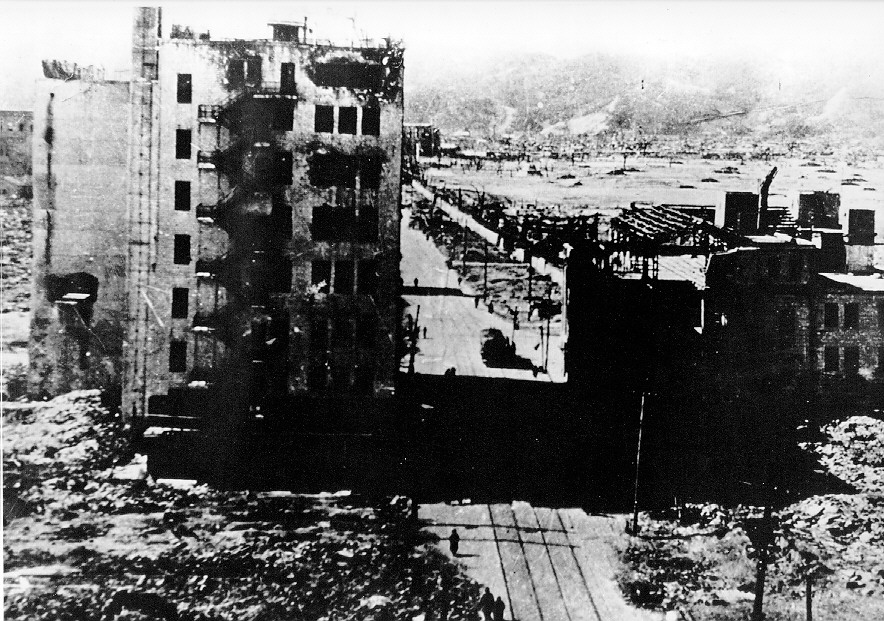

Hydrogen fusion and uranium (and other heavy element) fission both yield huge amounts of energy through annihilation of matter, with yields of E = mc2 where m is the mass lost, c the speed of light, and E the resulting energy. Fission, where massive atomic nuclei break up into less massive ones, is not as efficient as fusion. In the most efficient cases, only about 0.1% of the starting mass appears as energy, nearly ten times lower yield then with hydrogen fusion. However, fission does not require the same extremes of temperature and pressure as fusion, so it has been easier to learn how to make use of it, sometimes with awful results. As an example, the fission bomb dropped on Hiroshima at the end of World War Two weighed 4 tons and had the explosive yield of about 12,000 tons of conventional high yield explosive. This energy resulted from annihilating a few ounces of matter! The pictures below show dramatically how much energy is involved, and how far beyond chemical release of energy fission really is. (both from http://mothra.rerf.or.jp/)
 |
 |
| View of the destroyed city overlooking the site of the explosion. | Street scene about half a mile away from the explosion point. |
The deaths from the blast are estimated to be nearly 200,000, but cannot be known accurately because all the governmental records were destroyed.